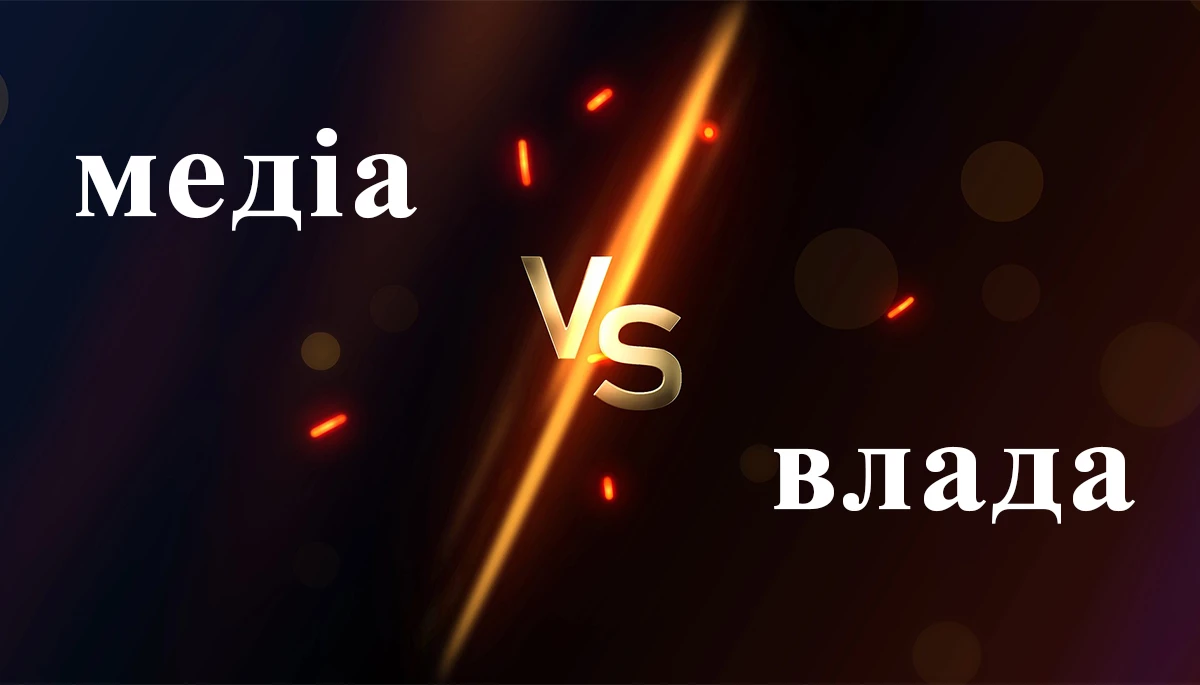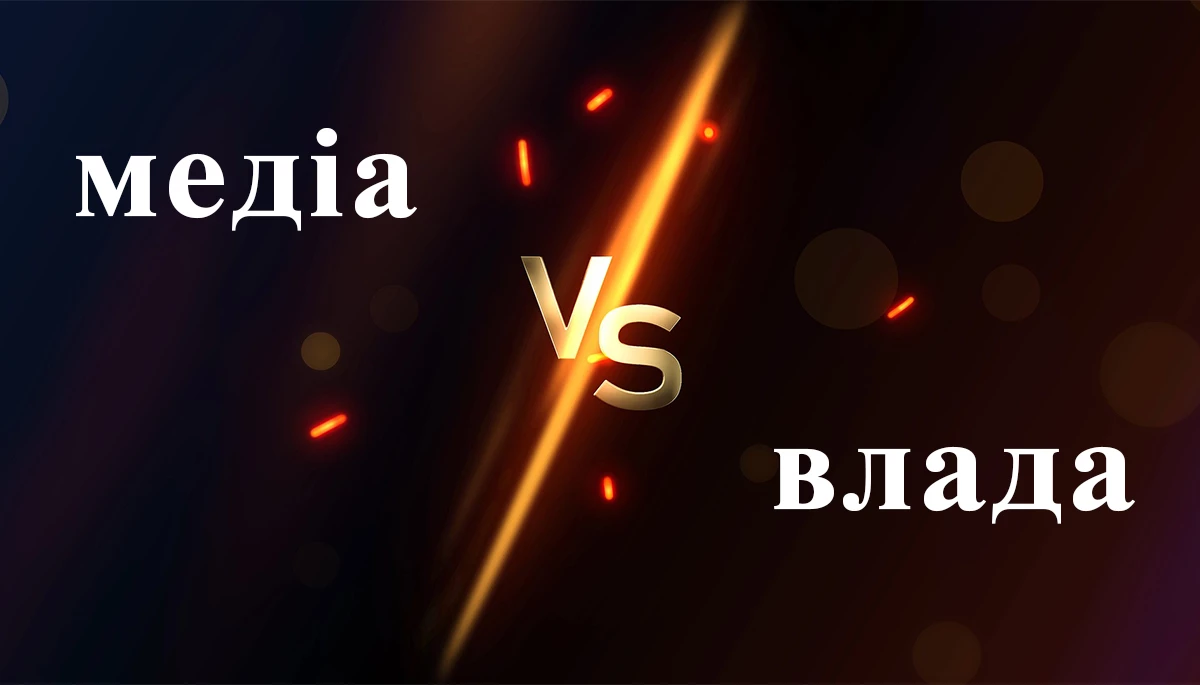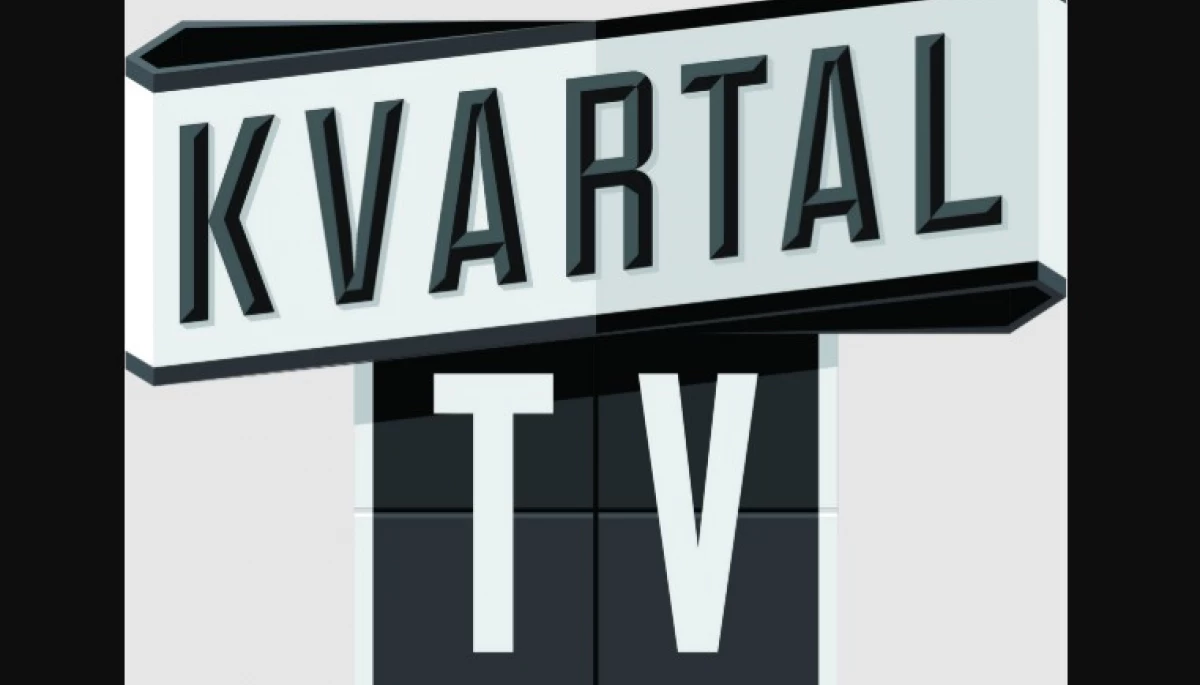
Resident evil of the Ukrainian media space. Key results of 2021


Over the past few weeks, Detector Media has been summing up 2021 in various media and media-related fields and industries. According to the DM editorial board, this article briefly describes the most important events and trends that will be remembered in 2021 in the media.
2021 was a year of changing the main challenge for Ukraine in the media. The external threat from Russia and its media outlets operating on Ukrainian territory was replaced by a threat from the authorities within, which, defending themselves against political opponents and preparing for the election, began to increase their presence in the media using undemocratic methods.
Pro-Russian disinformation in Ukraine in early 2021 was massive, highly effective, and coordinated. A study by Detector Media showed that the disinformation narratives produced by Medvedchuk's three TV channels (112, NewsOne, and ZIK), Inter media group, Strana.ua, Vesti, and several others were distributed far beyond the direct audience of these media through social networks and Telegram channels. Mixing Kremlin’s messages with criticism of the government's economic and social moves, these media used their “oppositional” status to protect themselves from possible regulatory and law enforcement sanctions. After a failed initiative to pass a law on disinformation, the authorities did nothing to thwart the Kremlin's propaganda machine in Ukraine, nor did it even acknowledge its existence. The implementation in early February 2021 of the National Security and Defense Council's sanctions mechanism against People's Deputy Taras Kozak, Medvedchuk's right-hand man and the formal owner of the three channels, came as a surprise to literally everyone.
It was also unexpected that this tool worked so easily and effectively. Protests by supporters of the Opposition Platform for Life and attempts to challenge the decision in court were unsuccessful, while international partners generally supported the Ukrainian government's actions or at least turned a blind eye to their ambiguity in terms of the law. Subsequently, similar sanctions were imposed on Strana.ua, Sharii.net, and several Russian media outlets, and even later on other Medvedchuk's new channels. Pro-Russian propaganda has not disappeared, but a significant reduction in its numbers and (perhaps, most importantly) the disappearance of a coordinated distribution system has been visible to an unaided eye. “The “media air” has become much cleaner, although it has not been 100% cleaned,” said Ihor Solovey, head of the Center for Strategic Communications and Information Security at the Ministry of Culture and Information Policy (MCIP). (This center is one of the two state centers for combating misinformation, established in 2021; another one is the International Center for Countering Disinformation based on the National Security and Defense Council (NSDC). Public figure Lyubov Tsybulska headed the MCIP Center, while the NSDC Center was headed by a lawyer Polina Lysenko. Both of them have resigned in a few months; now, the MCIP Center is led by Ihor Solovey, and the NSDC Center is headed by a former media manager Andriy Shapovalov. Another notable personnel change was the appointment of lawyer Hanna Malyar as a Deputy Minister of Defense for Strategic Communications and Information Policy. After her appointment, the Ministry of Defense has become more actively involved in combatting disinformation. Yet, it is too early to talk about coordinated strategic communications of the Ukrainian government - experts argue that the communication literacy and political will at the top is still lacking.
However, the history of sanctions should not be considered a triumphant victory over pro-Russian disinformation. The effectiveness of sanctions against pro-Russian politicians and their media is due to the coincidence of circumstances, including political will, public sentiment, and a controlled judiciary branch. Contrary to the recommendations of media experts, throughout this year, the authorities did not regulate the mechanism of legal sanctions against Ukrainian citizens and their companies. Because this has not happened, there is the danger that the sanctions will be used to destroy or subdue oppositional or independent media, which is critical of the government. Such initiatives came from the speakers of V. Zelenskyi's team, who manipulatively equated criticism of the government with pro-Russian propaganda.
In addition, the selectivity of sanctions is worrying: by neutralizing Medvedchuk's group and Strana.ua, the authorities ignored Nash channel (in Ukrainian: “Наш”), which inherited a large part of three blocked channels’ audience, and the Inter group, which belongs to another wing of the Opposition Platform For Life. However, both Nash and Inter have spread pro-Russian propaganda and continue to do till this day. How should one explain such inconsistency, if not by the government's political interests?
Another unpredictable and potentially dangerous tool of government pressuring of the media is the law on oligarchs. Rinat Akhmetov was the primary opponent of this law, which eventually resulted in a dramatic confrontation described in detail in Detector Media's article. The word “television” is not an exaggeration: the behavior of Volodymyr Zelenskyi and his entourage, including rhetoric during the press marathon on November 26, shows that the authorities perceive this conflict as war and media (not just the oligarchs who are media owners) as enemies.
Dependence on oligarchs (and owners in general) is indeed the biggest problem of the Ukrainian media market, which Detector Media and other media watchdogs have been talking about for years. The results of the news monitoring (read the 2021 results here) show that oligarchs intensively use personally-owned media to promote their political interests (such as, for example, Opposition Platform For Life does on Inter and the First Independent) and create their own positive image (such as Rinat Akhmetov does on Ukraine channel). However, it is impossible to conduct this market's “de-oligarchization” by surgical methods without affecting vital organs or harming the freedom of speech. The fact that the de-oligarchization went in the wrong direction from the start was evidenced by the “sale” of Petro Poroshenko's TV channels - Pryamyi (Прямий) and 5th channel (5 канал) to the newly established Free Media Holding co-owned by the close associates and managers of these channels. The channels are chronically unprofitable and subsidized, and there is no commercially successful model for information channels in Ukraine. However, Free Media holding, which has been created recently, assures that it does not receive subsidies from P. Poroshenko but earns profit itself. This statement is as dubious as Petro Poroshenko's declared “non-interference in the editorial policy.” For example, after the formal change of ownership, Detector Media’s monitoring recorded an increase in PR and positive materials about the European Solidarity and its leader.
So far, other media owners are not “selling” their media in the way that Petro Poroshenko did (excluding former cases such as Ihor Kolomoiskyi, who transferred "1+1" minority stakes to its employees and managers in 2017, or Yevhen Murayev, who transferred the management of Nash channel to the labor collective in the summer of 2021). There is still time to do so, as it is planned that “oligarchs” will be officially added to the register in May 2022. According to the law “On Media,” one of the oligarch's main traits is media ownership. Therefore, media owners still have a chance to get rid of this unpleasant status by transferring their media assets to fictitious people or other unrelated companies. This will mean a regression in Ukraine's already problematic path to media ownership transparency. However, developments have shown that the “sale” of 5th and Pryamyi channels to the Free Media holding saved them from de-oligarchization and arrest in a trial case under which Poroshenko is suspected of treason.
Even though authorities declared the de-oligarchization of the media, other major media groups (apart from Akhmetov's) remained loyal or at least neutral to V. Zelenskyi and his team throughout the year. Nevertheless, in 2021, the government began to engage in its own media presence and started building its own media pool. In particular, Servant of the People Deputy Oleksiy Kovalyov bought the 4th channel; several new or restarted broadcasters suspected of being related to the current authorities have been licensed. Moreover, the Avers TV channel network, which is connected to Ihor Palytsia, the leader of the For the Future party and an ally of the Servant of the People, has expanded. A favorable circumstance for strengthening the pro-government media resource is the current composition of the National Council on Television and Radio Broadcasting, fully formed by the President and the Parliament's mono-majority. However, the government's steps to strengthen the state-owned media, which Ukraine had to abandon as part of its international obligations on the road to Europe, are of much greater concern.
Dom TV channel, which from the beginning of its broadcast was supposed to be a “foreign language speaker” for the occupied territories of Ukraine (and, therefore, it is broadcasted in the Russian language), as well as the parliamentary TV channel Rada - received hundreds of millions of hryvnias from the budget and radically changed their strategy concepts. Contrary to its legal status, Dom TV channel is being transformed into an all-Ukrainian channel of general interest, which will broadcast political and entertainment talk shows, movies, and TV series (which is against the law because it is again in Russian). Authorities justify this by claiming that this reorientation of the channel is aimed at migrants who allegedly live all over Ukraine.
The team of the channel’s start-manager, Oleksiy Semenov, has reformatted the Rada channel into a traditional information TV channel, of which are more than a dozen in Ukraine. The products for the channel, which is de jure a subdivision of the Verkhovna Rada, are produced by the private production company Kinokit. According to Detector Media sources, Deputy Head of the Presidential Office, Kyrylo Tymoshenko, is coordinating the transformation of the parliamentary channel. The changes at the Rada channel might not have resonated so much if not for the appearance of political scientist Volodymyr Petrov on the channel and his partner from the Iceland TV channel, Serhiy Ivanov. The content of their programs leaves no doubt that the primary goal of the reformatted Rada channel is to promote the government's interests and discredit its opponents and critics. Even the editorial board’s decision (the body that formally has the authority to determine the content of the parliamentary TV channel) did not work to remove Petrov: the political technologist was simply transferred to the status of a fictitious "guest" of the evening broadcast programs. Pressure from opposition factions protesting the transformation of the Rada channel into a PR tool had only one consequence: promises from the parliament's mono-majority that the channel would operate within its predetermined mission - covering the work of parliament. However, since it is not known who and what principles determine the content of the broadcast, it will be difficult to guarantee the fulfillment of this promise. The official broadcast of the Rada channel is scheduled to begin on January 25th; political talk shows and other programs dedicated not solely to the work of the Verkhovna Rada are being prepared for launch.
The list of state media resources that can be mobilized to serve the government’s interests may not be exhaustive. The RRT Concern (Concern of Radio Broadcasting, Radio Communication, and Television) is preparing to build a digital multiplex MX-7, which can provide networks for the all-Ukrainian distribution of TV signals to channels indicated by the authorities. There are also plans to expand the network and new ways to use the Ukrinform news agency. Not to mention the strange improvisation of the People's Deputy from the parliament’s majority Oleh Dunda, who proposed to unite the state and public (!) media in one “state information concern.” Throughout 2021, there were ideas to create an online state service that would be streaming video broadcasts in the occupied territories. At the same time, government officials in charge of the media sphere, including the Verkhovna Rada Committee on Information Policy, Mykyta Poturayev, deny the existence of a coordinated policy aimed at expanding state media ownership.
“The current reversal is an awful story,” - wrote in his final column StopFake CEO Yevhen Fedchenko. “In 2022, first of all, we must prevent the strengthening of state influence on the media and prevent attempts to create and develop the state media. And we must also support Susplilne.”
A blitzkrieg attempt on Susplilne preceded the offensive on the state-media front. Initially, Maksym Krechetov, a media manager close to the President's Office, applied for Chairman of the Supervisory Board of the National Public Television and Radio Company of Ukraine (NPTU). Later, Deputy Head of the President’s Office, Yuriy Kostyuk, announced his intention to run for the Chairman of the NPTU Board but did not manage to submit the necessary documents. Subsequently, OP Deputy Chairman, Kyrylo Tymoshenko, expressed the opinion that the government itself could potentially appoint the leadership of Susplilne. When an attempt to take control of Susplilne has failed (partially due to civil society and international partners), the authorities chose another tactic: devaluation. The above-mentioned political technologists from the President's Office pool started working to discredit Susplilne. Meanwhile, the Head of State himself, commenting on the conflict between the editorship of the Countdown program (in Ukrainian: “Зворотний відлік”) and the Servant of the People faction, spoke of Susplilne in a disparaging manner. Authorities openly manipulated NPTU funding, and, in the end, the company received only three-quarters of the amount guaranteed to it by the law in the state budget for 2022. In a turbulent situation, Susplilne has managed to maintain the course of development that was set four years ago. Still, it is premature to say that the danger of the government’s interference in the NPTU has passed.
The blockade of Medvedchuk's channels has caused significant changes in the niche of information television, which may be replenished with a dozen more channels in the near future. The segment’s leaders within different audiences were Ukraine 24, Pryamyi, and Nash channels, which have divided most of the viewers coming from the closed channels. At the end of the year, Nestor Shufrych, Medvedchuk's new formal media owner, attempted to return to the satellite broadcasting with two channels at once - First Independent and UkrLive; the authorities responded with sanctions. Earlier, Shufrych expressed his intention to continue buying new channels. Other significant trends in the TV market include the growth of the paid online video segment, conflicts and changes in government regulation of copyright, and others.
The loudest event in the online media field in 2021 has been the transfer of Ukrayinska Pravda’s (UP) editorships under the ownership of the Dragon Capital CEO, a Czech businessman Tomas Fiala. The new owner signed an agreement not to interfere in editorial policy and admitted that he dreams of his own TV channel. According to Fiala, he bought Ukrayinska Pravda so that it “would not fall into the wrong hands.” The businessman, who now owns the UP and the NV media group (magazine, websites, and radio), has been called an oligarch, although he disagrees with the statement. UP and NV compete with each other for readers, but not for the advertising money – they now share a joint sales department.
An important trend, which many media market experts have been talking about, has been the strengthening of streaming video services (OTT - over-the-top media service), to which part of the audience of cable, terrestrial, and satellite television has been flowing. This is partly due to the lack of a regulatory framework, as sectoral laws and the powers of the National Television and Radio Broadcasting Council do not apply to online video. In addition, foreign OTT services are available to viewers in Ukraine, including Netflix, which has become more active in the Ukrainian market this year. Other market players - TV channels, cable TV providers, satellite platforms - are concerned about the situation. They see this as unfair competition and increasing demand for an equal playing field – which means the need to introduce an OTT regulation.
While 2020 was a year of significant trauma for the media market due to the epidemic and quarantine restrictions, in 2021, the media adapted to life in new conditions. Media looked for new sources of funding (in particular, they applied for donations and tried to sell content to their audiences), learned how to switch to a remote mode, and so on. At the same time, the abnormally high demand for 2020 content related to lock down and the public's focus on the coronavirus has subsided. The media, which in 2020 situationally became the “heralds of coronavirus," returned to the usual topics. Even at the peak of epidemic waves in spring and fall, when the situation seemed catastrophic, it behaved much calmer than at the beginning of the COVID-19 epic. The fakes and disinformation about coronavirus that Detector Media has been researching throughout the year have mainly been located on social media. In contrast, traditional media started to fact-check the data more responsibly and carefully. Instead, we saw another challenge: the coverage of quarantine and vaccination campaigns was distributed mainly in the form of propaganda, while criticism of the state's actions related to the epidemic was excluded from the media discourse. At the same time, according to Detector Media's director Halyna Petrenko, the 2021 vaccination information campaign organized by the state was a failure.
An important trend of 2021 for the media was the return to the agenda of an issue on professional solidarity, the consolidation to combat the pressure on the media and violations of journalists’ rights, and the future mechanism for sectoral self-regulation. Several conflicts and violations of journalists’ rights (the loudest of which are described in Hala Sklyarevska's article), as well as an increased government/political interference in the media, prompted prominent media outlets to address their colleagues on November 16th on the Day of Radio and Television Workers. The declared goal of the union is “to create an effective self-governing organization of journalists that will be able to resist the system of political and commercial pressure on freedom of speech. Create a community that unites all Ukrainian journalists.” So far, this initiative exists without a leader; it is not officially registered as an organization and is called a Media Movement. Bringing together Ukrainian journalists is an ambitious and challenging task: this professional community had been hitherto scattered and divided due to political views; it has shown solidarity only in the face of the most severe threats. However, this should not be delayed either, since the legislature will soon get its hands on the law "On Media", which may foresee the journalistic self-regulatory bodies and their powers. In the interest of journalists themselves, these bodies should not be controlled by the state and must represent the entire professional community.










